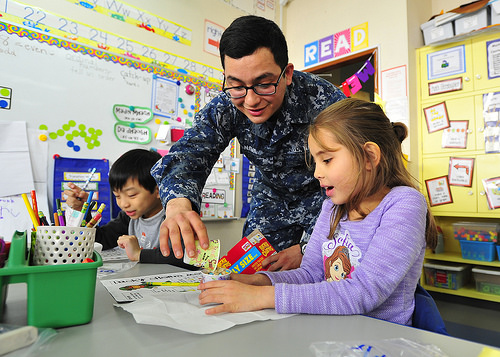18 Strategies to Help Students Who Do Not Wait for the Teacher to Arrive

Are you looking for strategies to help students who do not wait for the teacher to arrive? If so, keep reading.
1. Select a peer to model appropriate behavior for the learner when a supervisor is detained (e.g., remain seat or designated area, remain quiet, work on a designated task, etc.).
2. Get the learner to question any directions, explanations, or instructions not grasped.
3. Select a peer to supervise the learner when an instructor is detained.
4. Give a list of possible learning activities for the students to take part in when an instructor is detained (e.g., write a letter to a friend, work on designated tasks, organize work area, look at a magazine, etc.).
5. Along with instructions, give an incentive statement (e.g., “If you wait quietly, you can have five minutes of free time.”).
6. Make sure the learner knows when it is acceptable to get others’ attention (e.g., in an emergency).
7. Connect with parents (e.g., notes home, phone calls, etc.) to disseminate information about the learner’s progress. The parents may reinforce the learner at home for waiting properly for a supervisor.
8. Draft an agreement with the learner stipulating what behavior is required (e.g., remain seated or in designated area, remain quiet, and work on designated task) and which reinforcement will be implemented when the agreement has been met.
9. Provide instructions in a compassionate rather than a menacing manner (e.g., “Please wait quietly.” rather than “You had better wait quietly or else!”).
10. Praise the learner for waiting properly for a supervisor to arrive based on the duration of time the learner can be successful. As the learner shows success, slowly increase the duration of time required for reinforcement.
11. Praise those students in the classroom who remain in their seats or designated area, remain quiet, and work on designated tasks.
12. Create classroom rules: • Complete every assignment. • Remain in your seat. • Finish tasks. • Meet task expectations. • Raise your hand. Examine rules often. Praise students for following the rules.
13. Converse with the learner to explain (a) what the learner is doing wrong (e.g., leaving seat, talking, making noises, etc.) and (b) what the learner should be doing (e.g., sitting in seat or designated area, remaining quiet, etc.).
14. Praise the learner for waiting properly for a supervisor to arrive: (a) give the learner a concrete reward (e.g., privileges such as leading the line, handing out learning materials, 10 minutes of free time, etc.) or (b) give the learner an informal reward (e.g., praise, handshake, smile, etc.).
15. Consider using a classroom management app. Click here to view a list of apps that we recommend.
16. Consider using an adaptive behavior management app. Click here to view a list of apps that we recommend.
17. Consider using Alexa to help the student learn to behave appropriately. Click here to read an article that we wrote on the subject.
18. Click here to learn about six bonus strategies for challenging problem behaviors and mastering classroom management.






